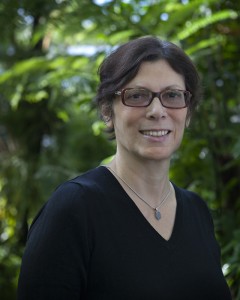From Intern To Leader: A Talk With The Garden’s New Head of Science
Posted in Personalities in Science on April 1, 2014 by Stevenson Swanson
Barbara M. Thiers, Ph.D., is the Patricia K. Holmgren Director of the William and Lynda Steere Herbarium and Vice President for Science Administration at The New York Botanical Garden. Stevenson Swanson is the Botanical Garden’s Science Media Manager.
 As the longtime Director of the William and Lynda Steere Herbarium, Barbara M. Thiers, Ph.D., already had a demanding job as the head of one of the world’s four largest collections of preserved plant specimens. But recently she added a new title—and new responsibilities—when she was named Vice President for Science Administration at The New York Botanical Garden.
As the longtime Director of the William and Lynda Steere Herbarium, Barbara M. Thiers, Ph.D., already had a demanding job as the head of one of the world’s four largest collections of preserved plant specimens. But recently she added a new title—and new responsibilities—when she was named Vice President for Science Administration at The New York Botanical Garden.
In that role, she oversees all staff, programmatic initiatives, and operations in the Botanical Garden’s Science Division, one of the leading centers for studying plants at all levels, from the whole organism down to its DNA.
The promotion has made her one of the few women ever to lead scientific research at a major botanical institution.
I recently sat down with Dr. Thiers in her office on the fourth floor of the Garden’s Library building for a conversation about her life and career, including how she spent many of her weekends as a child and how long it took her to decide she wanted to stay at the Garden after her arrival as a postdoctoral intern in 1981.
How did you become interested in botany?
I was born in Texas but grew up in San Francisco, where my father was a professor at San Francisco State University. He studied fungi and started the herbarium at San Francisco State. Every weekend during the rainy season, we went collecting. That’s just what we did as a family. So I spent much of my youth in the woods collecting fungi. I also earned some pocket money as a teenager doing little jobs in the herbarium.
So you never doubted you’d become a scientist?
Not exactly. I went through the typical rebellion in my teenage years and started college as an English major. But I liked the life that my father’s students talked about, being outdoors and studying plants. I enjoyed being out in the woods, too, and I had a very strong interest in museums.
What brought you to the Garden?
I went to the University of Massachusetts for graduate school and studied liverworts. Much of what I studied grew in the tropics, and not a lot of people studied them. So I was a good candidate for the Garden. They had a museum internship at the time, and I got that as a post-doc. I was pretty sure within a week that I needed to find a way to stay here.
[Herbarium Director] Pat Holmgren was a wonderful mentor, and it was an exciting time because expeditions were leaving and coming back all the time, in part because of the Projeto Flora Amazonica [a Garden-led effort in the 1970s and 1980s to collect plant specimens from the Brazilian Amazon]. We just had so much activity. The biggest problem was keeping up with all the material coming in.
You held a number of positions at the Steere Herbarium and have been Director since 2000. I get the feeling you like the Herbarium.
I have a strong fascination with how we preserve anything that is important to us—culturally or scientifically. We are acknowledging that things that have been done in the past can have importance in the future. This is one of the better things that human beings do, it seems to me.
The challenge for herbaria is that they tend to be so large. And then here is this resource of 7.3 million specimens, but how do we make sure the information it contains is leveraged in the greatest possible way? That’s how I got interested in computerization and digitization and the particular challenges of taking things that have been handwritten over the years and making them usable in a modern context.
And now, in addition to running the Herbarium, you’re the head of the Science Division. What are your thoughts about your new position, and what’s ahead for plant science at the Garden?
I have had such admiration over the years for all of the varied and excellent work that has gone on here, and the opportunity to represent that and share the importance of what we do with a broader audience is a challenge that I’m happy to take on.
In general, we are moving toward a tighter integration of all the research we’ve done—trying to make sure that everything we know about plants gets linked together for a total understanding. We need to take everything we know about plants to predict what will happen to plant life in the future and how we can prepare for that. It’s about as important a question as there is because plant life is fundamental to life on Earth.
You can read the Garden’s press release about Dr. Thiers’ promotion here.

